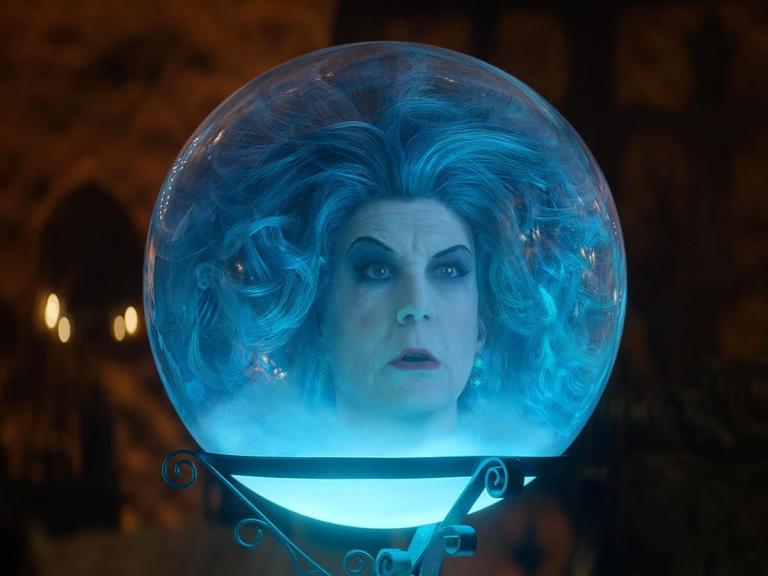
Disney was once considered the untouchable gold standard in family entertainment, but now the brand is declining, both fiscally and culturally. The house that Mickey Mouse built hasn’t shied away from hiring actors and promoting openly satanic messages.
Disney’s “Haunted Mansion” proved undeniably faithful to the theme park ride, even if you’re unsurprised by the movie’s pervasive occult themes and general hostility toward a biblical perspective. The film, not to be confused with an entirely different 2003 movie starring Eddie Murphy, features an A-list cast that includes Danny DeVito, Owen Wilson, Rosario Dawson, Jamie Lee Curtis, and an unrecognizable Jared Leto as the Hatbox Ghost.
The movie focuses on widow Gabbie (Dawson) and her son Travis, who leave the big city for Gracey Manor, a French Colonial-style home in Louisiana. Upon moving in, however, the single mom and her son realize they have supernatural squatters and recruit a team of “spiritual experts” to cleanse their home.
In the real world, for the last 2,000-plus years, priests, pastors and other men of the cloth have been sought out for comfort, counsel, and prayer. They are fallen and sinful men, just like the rest of us, who have mostly committed their lives, however imperfectly, to pointing people to the gift of God in Christ Jesus. At least, that’s how it’s supposed to be.
However, in the film, the priest character, Father Kent, played by Wilson, is an unfortunate fraud and swindler who wears a collar and oversized cross around his neck as a costume rather than a lifestyle. Kent is far from being a righteous shepherd of the flock, a passive, almost apathetic figure deferring on most matters to atheist freelance photographer Ben Mattias and psychic Harriet, played by LaKeith Stanfield and Tiffany Haddish.
Like much of today’s contemporary preaching, Kent has an affinity for sounding more spiritual than he is. He tosses out nuggets of “Churchianity” like “The Lord works in mysterious ways” and even quotes lyrics from “Amazing Grace.” In one scene, Kent tells an already-annoyed Ben that the “Big Man upstairs is always watching. He keeps me on a short leash,” to which Ben replies, “Not short enough.”
In another scene, before an overtly demonic “seance” session in which a spirit possesses Harriett, Kent offers a prayer that, ironically enough, mocks the whole point of prayer: “God, give us a break! We don’t want to be haunted. There are so many bad people. Haunt them.” It’s only later that we learn Kent is not a priest but rather a common fraud who works conveniently enough at a Halloween costume store.
While the others plan how to take back the house from the spirit squatters, “Father” Kent helps himself to some booze and defers to the atheist and the psychic to figure things out. And maybe, despite all the darkness, that’s where “Haunted Mansion” buys itself a bit of goodwill with its audience: apart from the cast and plot, the film is careful to correspond to the Haunted Mansion ride itself, including details down to the same vertically-striped wallpaper from the Stretching Room at Gracey Manor.
There might be enough references for some parents to wax nostalgic about the old days at Disneyland, but it’s unclear if younger people who have never been to one of the Disney parks will necessarily connect with the movie beyond a few sight gags. Then again, as the culture loves to tell the church, “Who am I to judge?”
So what if crucifixes and crosses permeate “Haunted Mansion” from the first frame to the last in a blatant glorification of death and a mockery of the cross of Christ, the only One to ever triumph over death? It’s a question you’ll want to ask yourself and God before seeing “The Haunted Mansion.”
